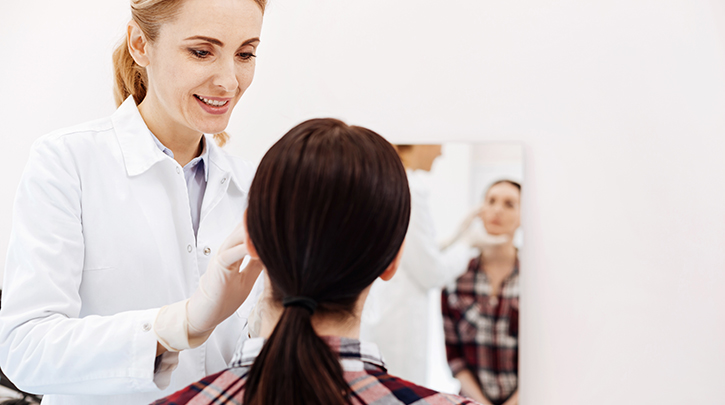In today’s digital age, there are many ways to get a little insight into a medical aesthetic patient’s perspective, from social media posts and comments to online reviews and more. However, surveys may be the most effective way to gather the data you’re looking for directly from patients without the need to publicize all the details. But surveys can also come across as tacky or end up being useless if conducted incorrectly. The value that your clinic can reap from surveys is directly correlated with how well you’ve designed your survey. Here’s how to ensure you’re on the right track.
How to Create a Successful Patient Survey
Define Your Purpose
To better ensure your survey is succinct, professional, and easy on your staff, it is best to start by defining the purpose of your survey and make it specific. If you’re hoping to gain more engagement on social media, for example, and are wondering if personal branding might be beneficial, you could use your survey to see how patients may respond, rather than diving in and potentially wasting time and resources if your efforts flop. Another example might be regarding how patients might feel about adding a consultation fee. Whatever the reason, be sure there is a specific purpose to your survey to help narrow in on the questions you’ll be asking. In line with this, be sure to only ask questions for which you know what you’ll do with the data. This will help to keep the survey results easy for staff to compile and draw conclusions that are sure to better direct your marketing, customer service, or treatment efforts.
Be Considerate of Patients’ Time
Be upfront about approximately how long the survey may take patients to complete, even if it is a range. Out of respect for your patients’ time, the rule here should be the shorter the better. The best length is five minutes or less, but under no circumstances should your survey take more than 10 minutes to complete. If your survey is too long, you may get very few responses or simply have respondents drop out part way through. Depending on the software or service you’re using to conduct your survey, add a progress bar or update to the side of the survey to keep patients in the know regarding how much is left to answer. Alternatively, if a progress option is not possible, consider including the number of questions in the survey introduction alongside an estimated time for completion and be sure to number questions throughout. This way patients may keep track of their own progress.
Keep It Simple, But Specific
In the same vein, respect patients’ time by keeping questions simple and specific. Aim for five to 10 questions maximum. And if you think one more question couldn’t hurt, consider that it could shift patients to think you’re wasting their time and end in uncompleted surveys. Keep it just to the essentials for the best chance at success.
In terms of question formats, include a variety that slants toward more multiple choice, scale, spectrum, or open-ended responses. Yes-or-no questions can be polarizing, offer less insight, and don’t give patients the opportunity to share their honest opinion. For example, rephrase the yes-or-no question of, “Would you like to see more of X on our social media? Yes or No” to, “What would you like to see more of on our social media? a) Treatment results, b) Aesthetic tips, c) Staff and behind-the-scenes, or d) Other.” Be sure to also mix in some open-ended questions for more unique feedback, such as, “What are you not seeing on social media that you would like to?” If offering multiple choice answers, be sure to include an “other” option and a space to leave a note regarding the answer they didn’t see. This allows patients to provide responses outside of your assumptions. Finally, ensure that response options for scales are consistent and questions have a logical progression with a clear link to the purpose of your survey.
Test It Out
Before sending your official survey out to patients, test it out with staff or friends to ensure everything works smoothly, there are no gaps in response options or questions, and your time estimate is accurate. Ask those testing your survey to offer their feedback on the questions included and whether they’re easy to answer, or if they felt there were any gaps in response options or the progression of your questions. Be sure they also time themselves and offer up this information to you, so you can be sure your estimated time for completion is accurate. Consider all feedback, even notes regarding the alteration of one word here and there. Valuable feedback can help smoothen any errors prior to sending the survey out to patients, helping you to make a more professional impression once the survey does reach their hands. It will also ensure that you’re getting the most accurate feedback from patients as possible.
Send It at the Right Time
Generally speaking, the best time to send out survey emails to consumers is overnight on a Saturday, though workaholics are better approached a littler later in the morning on Saturdays. When sending your email inviting patients to take your survey, be sure to pick a time that is best for the demographic that your medical aesthetics clinic serves. A quick online search will offer several opinions on the best times for specific demographics or email types, but the most valuable information will come from data on your own email list. Check your email marketing service for statistics on your best open and click-through rates on prior emails you’ve sent and use that information to inform you. In this initial email, also ensure you offer a reasonable deadline for completing the survey and be sure to send a follow-up email to those who may have not completed it, if the software you’re using offers this option. Keep in mind that patients are busy so a reasonable timeline and reminders will be appreciated.
Conclusion: Don’t Forget to Share the Results
After your survey is complete, compile the information and share the top results with your patients. They’ll not only be interested to know, but they will also be able to see that their responses have been noted and their feedback is valued. Utilize the information received to not only fulfill your survey’s purpose, but to also inform other business matters, such as content topics or social media posts while still keeping in line with your privacy policy. Overall, there are a multitude of ways surveys can improve your medical aesthetics clinic, offering valued patients what they are looking for while building your return on investment (ROI).
Interested in learning more about the simple ways you can boost your ROI? Learn how a Venus Concept partnership can help you see a higher return on your marketing efforts and medical aesthetics device investments. Contact an expert today.
Practice Enhancement Tips






